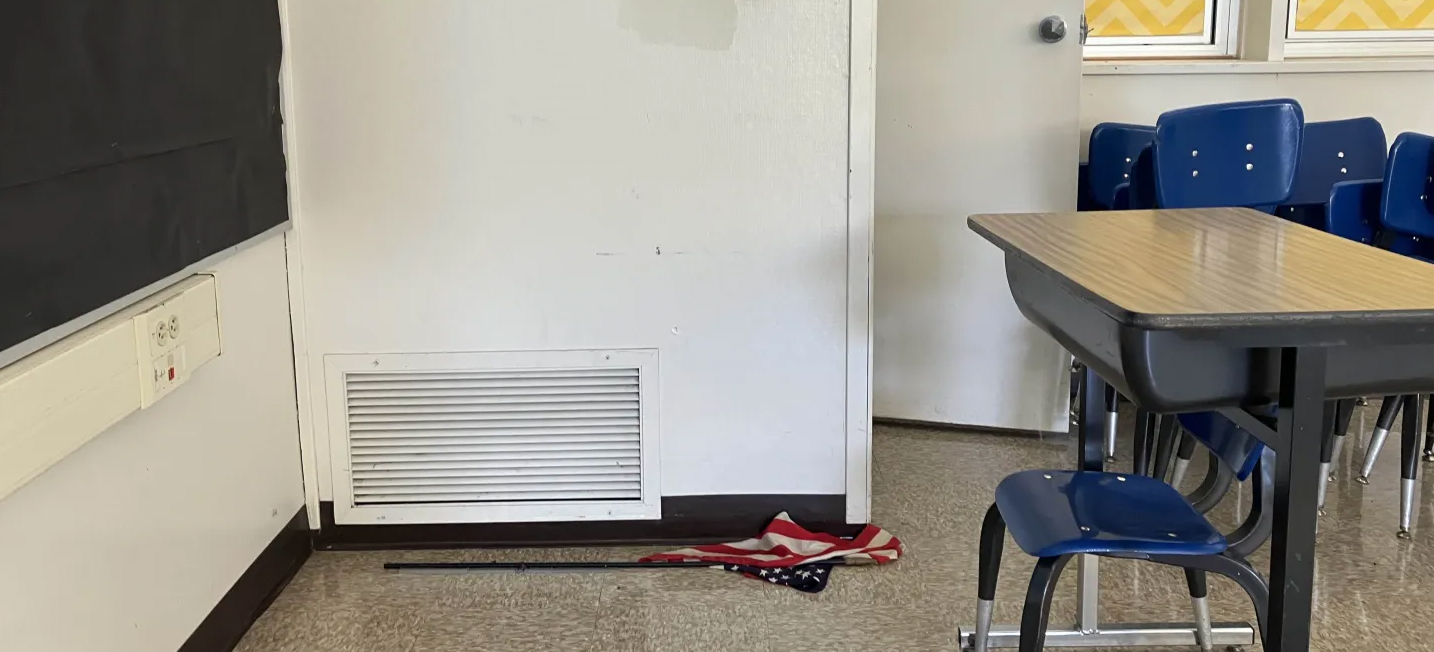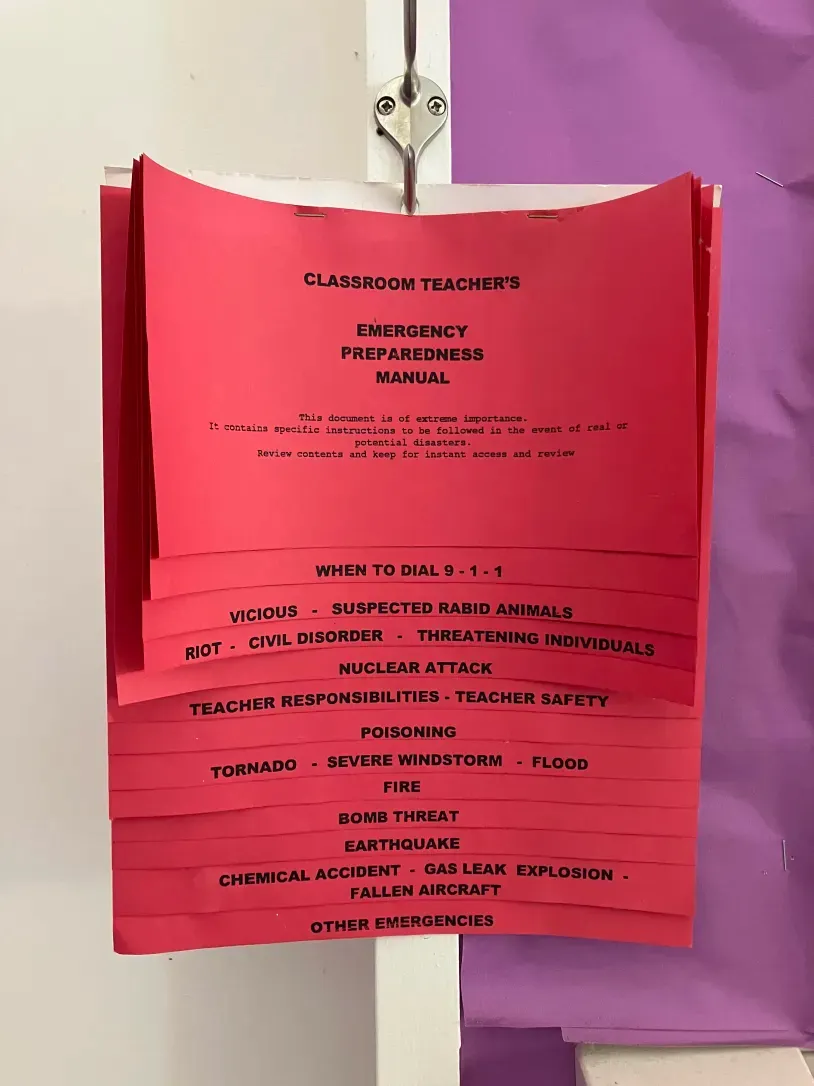I’m not a morning person but I arrive at 6:30am as requested, wearing clothes I’m “comfortable getting dirty, ripped, or cut.” The decommissioned elementary school in Fremont has the air of a place that was abandoned suddenly: art supplies are still in the cupboards and child-size chairs are still stacked up in classroom corners. At this Bay Area Active Attacker Full-Scale Exercise, first responder agencies from around the East Bay run practice drills to prepare for a large-scale casualty incident like a mass shooting.
I’m here because I answered the call for volunteer victims on an emergency preparedness mailing list. The library—which is still half-full of young reader series and educational comics—has been commandeered as a staging area for the volunteers to hang out, receive our instructions, and have moulage applied by contractors from a sinisterly-named “tactical and emergency casualty care” training company. To my embarrassment, I see that most of the volunteers are teenagers, and most of them know each other. They chat, shriek, and flirt as they wait to have latex head wounds applied and bruises daubed on. After I get an enormous goopy gash pasted onto my shin, I make a beeline for one of the few other adults.

“I wonder where they got all these kids from?” I make conversation and am also curious. He tells me they’re from the Police Explorers, a program for youth that he also participated in as a teenager in Oakland in the eighties. He apparently got to ride along with cops and intervene in domestic disputes, which I cannot imagine is still the case.
We learn in our briefing that the scenario will be “mass shooting at the homeless encampment,” which, uh, real California dystopia hours, holy shit. We’re to play the residents of an encampment who weren’t able to run away when the shooter came rampaging through. The coordinator comes from a different and even more sinisterly named training company, and tells us that the cops will be firing blanks: If we find the shells on the ground, we are told, we can keep them but shouldn’t post them on social media. And then we’re sent to our positions, lying in the corner of empty classrooms or huddling in the weeds under the jungle gym. The exercise begins. First a series of loud cracks blasting from a gunshot-noise-maker-device and then the “shooter”—dressed like the off-duty cop he probably is, in a tight t-shirt, snapback, and mirrored sunglasses—runs through with a fake pistol held aloft.
The cops run after him in pursuit as we yell, moan, and pretend to be mentally disturbed. On their way to “neutralize the threat,” they accidentally fake-shoot one of the volunteers who gets in the way at the wrong moment. When the paramedics arrive on the scene, next, to triage the wounded, the kids are having a field day, yelling “The cops shot Johnny!!” and “Why aren’t you helping me??” and “Where are my tax dollars going!!” It’s like we’re performing in some kind of low-budget haunted house, with the cops and medics here to be frightened. Once the survivors are removed from the scene and the dead are black-tagged and carried out on stretchers, we re-set the exercise to begin again with a different group of first responders.
As I sit in a closet for a second go-round, waiting for someone to find me and assess my injury, I try to unpack what the hell is going on. This is what is going on: Low-income and “at risk” kids, enlisted as mini-cops in a city-funded program, hiding in dusty classrooms at an abandoned school, play-acting homeless adults shot and murdered by an ideologically opaque assailant, all orchestrated by one of the many patriotic ex-military-coded consulting companies that supply cities with training activities meant to prepare them for fucked up but commonplace tragedies.

I’m getting a vivid illustration of what I guess I already understood: “Emergency preparedness,” as we currently know it, is intimately tied to policing and military operations. Funding for these drills generally trickles down from the Department of Homeland Security, and the expertise tends to be ex-military. While the emergencies we’re likely to experience are downstream from the slow disaster of climate change—hurricanes, wildfires, heat waves and cold snaps—FEMA’s capacity has been shredded and federal funds are being pulled from state-level planning initiatives. I suppose when there’s no way to prevent or mitigate disaster, all that’s left is to triage the fallout and enforce the law on desperate people trying to save themselves.
When a paramedic finally finds me, they wrap a tourniquet around my thigh and a yellow band around my wrist.“Can you walk?” they ask; “Is anything else hurting?” I don’t know how to answer.

